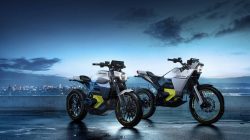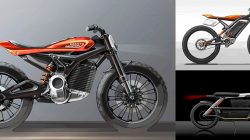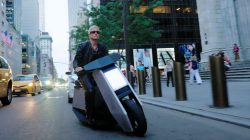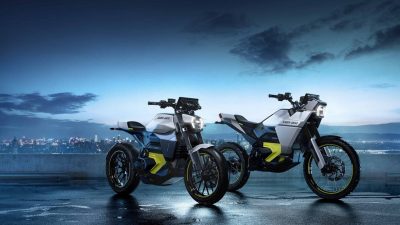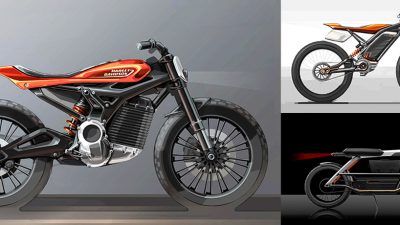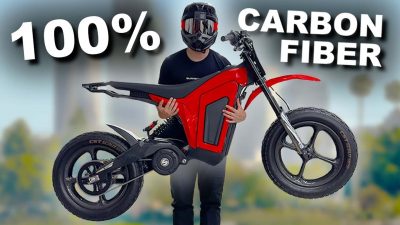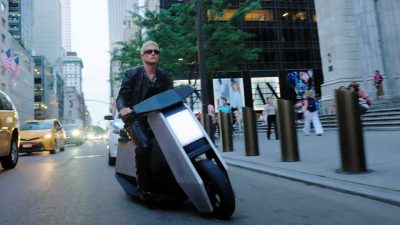The Rise of Electric Motorcycles in Cuba
Electric Motorcycles in Cuban Streets
In recent years, the sight of electric motorcycles and motorbikes has become more common in the urban landscape of Havana and other cities in Cuba. These vehicles range in price from 1,200 to 3,000 USD, depending on their specifications, and can be purchased from individuals who import them from countries like Panama, the United States, and Mexico. However, the cost of these electric motorcycles is prohibitive for the average Cuban worker, making them a luxury only accessible to those with relatives abroad, private business owners, or high-earning employees.
Challenges in Public Transportation
In a city where public transportation is struggling and obtaining fuel for vehicles can be a costly and difficult task, the demand for electric motorcycles as a means of personal transportation is on the rise. With the constant challenges faced by Havana residents in commuting, many are turning to these electric vehicles as a solution to their transportation woes. Furthermore, the increasing scarcity of fuel at regulated prices is pushing more people towards alternative modes of transportation like electric motorcycles.
Limited Accessibility
Despite the growing popularity of electric motorcycles in Cuba, their high cost remains a barrier for many residents. Only a select few, such as those with financial resources or access to foreign relatives, can afford to purchase these vehicles. This leaves a majority of the population reliant on other means of transportation, such as bicycles or public transportation, which are often unreliable and overcrowded. The limited accessibility of electric motorcycles highlights the stark economic disparities present in Cuban society.
The Impact on Daily Life
For those fortunate enough to own an electric motorcycle, the impact on their daily life is significant. These vehicles provide a level of convenience and freedom that is not easily attainable through public transportation or traditional modes of commuting. From university students attending classes to professionals navigating the city for work, electric motorcycles offer a practical and efficient means of getting around Havana’s busy streets. Despite the challenges of ownership, the benefits of having personal transportation are undeniable for many Cuban residents.
Quotes and Statistics
According to a local professor, the rising popularity of electric motorcycles has created a noticeable divide between those who can afford them and those who cannot. The professor laments his own inability to purchase such a vehicle due to financial constraints, highlighting the economic disparities present in Cuban society. Additionally, statistics show that the demand for electric motorcycles is on the rise, with more residents seeking alternative modes of transportation in light of the challenges faced by traditional public transportation systems.
Conclusion
In conclusion, the rise of electric motorcycles in Cuba reflects the growing demand for reliable and efficient transportation solutions in the face of economic challenges. While these vehicles offer a practical means of getting around Havana’s congested streets, their high cost limits accessibility for many residents. As more people turn to electric motorcycles as a way to navigate the city, it is crucial to address the underlying economic disparities that impact the ability of Cuban citizens to access such transportation options. By investing in sustainable transportation solutions and addressing economic inequalities, Cuba can work towards a more equitable and efficient transportation system for all residents.
Pertanyaan Umum
1. Apa yang menjadi tren di kota Havana beberapa tahun terakhir ini?
– Peningkatan penggunaan sepeda motor listrik di kota Havana.
2. Berapa harga sepeda motor listrik di kota Havana saat ini?
– Harga sepeda motor listrik saat ini berkisar antara 1.200 hingga 3.000 USD, tergantung pada karakteristiknya.
3. Siapa saja yang bisa membeli sepeda motor listrik di kota Havana?
– Hanya orang-orang yang memiliki kerabat di luar negeri yang bersedia memberikan mereka sebagai hadiah, pemilik bisnis swasta, pekerja yang cukup mampu untuk memiliki transportasi pribadi, atau anak-anak dari eksekutif perusahaan negara atau swasta yang mampu membelinya.
4. Mengapa semakin banyak orang di kota Havana mencoba untuk membeli sepeda motor listrik?
– Karena sistem transportasi publik yang semakin hancur, sulitnya mendapatkan bahan bakar untuk kendaraan, serta kebutuhan akan solusi transportasi pribadi yang lebih terjangkau.
5. Mengapa penulis, sebagai seorang profesor, hanya bisa menggunakan sepeda untuk berkeliling kota Havana?
– Karena pendapatannya tidak mencukupi untuk membeli sepeda motor listrik seperti banyak mahasiswa yang memiliki kendaraan pribadi.

Ringkasan
Pada artikel ini, disajikan foto-foto motor listrik yang semakin umum ditemukan di pemandangan perkotaan Havana dan kota-kota lain di Kuba. Harga motor listrik ini berkisar antara 1.200 hingga 3.000 USD, membuatnya sulit dijangkau bagi pekerja rata-rata Kuba. Hanya orang-orang tertentu yang dapat membeli motor listrik ini, seperti yang memiliki kerabat di luar negeri, pemilik bisnis swasta, atau pekerja dengan penghasilan yang cukup tinggi. Dalam kondisi transportasi publik yang semakin memburuk di Havana, motor listrik menjadi pilihan untuk mengatasi masalah transportasi.
Bagaimana pandangan pembaca tentang peningkatan penggunaan motor listrik di kota-kota Kuba? Apakah kendaraan listrik ini juga menjadi tren di negara lain? Apakah adopsi kendaraan listrik bisa menjadi solusi transportasi yang berkelanjutan di masa depan? Mari berikan pendapat dan diskusi di kolom komentar di bawah!
Sumber berita silahkan Cek di sini Source link . jangan lupa baca berita/artikel terkait melalui link di bawah. dan silahkan cek artikel otomotif dari otomotif.autos sekarang di : artikel otomotif

